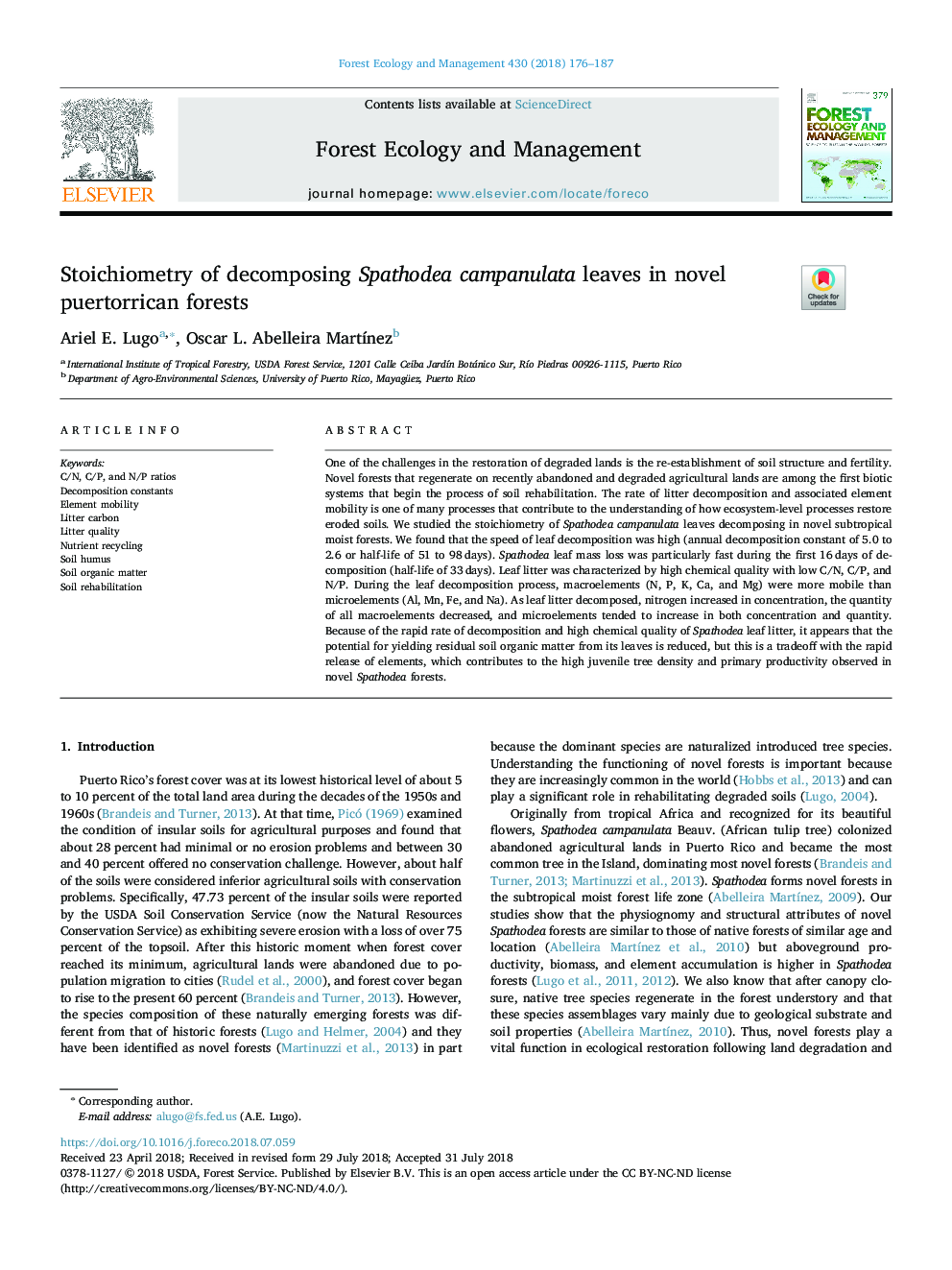| Article ID | Journal | Published Year | Pages | File Type |
|---|---|---|---|---|
| 6541405 | Forest Ecology and Management | 2018 | 12 Pages |
Abstract
One of the challenges in the restoration of degraded lands is the re-establishment of soil structure and fertility. Novel forests that regenerate on recently abandoned and degraded agricultural lands are among the first biotic systems that begin the process of soil rehabilitation. The rate of litter decomposition and associated element mobility is one of many processes that contribute to the understanding of how ecosystem-level processes restore eroded soils. We studied the stoichiometry of Spathodea campanulata leaves decomposing in novel subtropical moist forests. We found that the speed of leaf decomposition was high (annual decomposition constant of 5.0 to 2.6 or half-life of 51 to 98â¯days). Spathodea leaf mass loss was particularly fast during the first 16â¯days of decomposition (half-life of 33â¯days). Leaf litter was characterized by high chemical quality with low C/N, C/P, and N/P. During the leaf decomposition process, macroelements (N, P, K, Ca, and Mg) were more mobile than microelements (Al, Mn, Fe, and Na). As leaf litter decomposed, nitrogen increased in concentration, the quantity of all macroelements decreased, and microelements tended to increase in both concentration and quantity. Because of the rapid rate of decomposition and high chemical quality of Spathodea leaf litter, it appears that the potential for yielding residual soil organic matter from its leaves is reduced, but this is a tradeoff with the rapid release of elements, which contributes to the high juvenile tree density and primary productivity observed in novel Spathodea forests.
Keywords
Related Topics
Life Sciences
Agricultural and Biological Sciences
Ecology, Evolution, Behavior and Systematics
Authors
Ariel E. Lugo, Oscar L. Abelleira MartÃnez,
